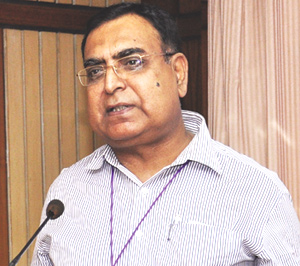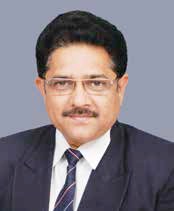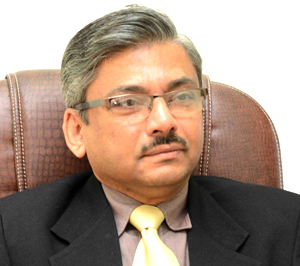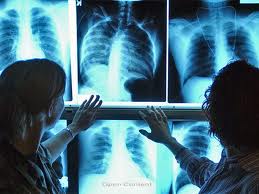
 When diagnostic services will improve in the smaller towns then only the doctors will prefer to go to these areas. Says B B Thukral Consultant and HOD, Dept. of Radiology and Imaging Safdarjung Hospital and VMMC, New Delhi. In conversation with Ankush Kumar, ENN
When diagnostic services will improve in the smaller towns then only the doctors will prefer to go to these areas. Says B B Thukral Consultant and HOD, Dept. of Radiology and Imaging Safdarjung Hospital and VMMC, New Delhi. In conversation with Ankush Kumar, ENN
With the introduction of new technologies and precision techniques, how do you see the developments in Diagnostics in next five years?
Advanced technology is helping the clinicians to reach correct diagnosis faster and thereby initiation of treatment is early. However it is at some cost to the individual and society, which at present is exorbitant in Indian context. Many a times unnecessary and costly investigations are being done without any additional benefit to the patient. Clinicians are now treating disease rather than the patient as a whole. Treatment is not only of the disease but also of the patient and his family which requires proper counseling and consolations. I am sorry to say this is grossly lacking in todays over busy clinicians. I do see a lot of development over next five years particularly in molecular imaging and organ/ site specific targeted therapy as a result of further improvement in imaging and human of biological processes.

Please name few guidelines you would offer the radiology professional just entering the field?
Younger generation of radiologists is running towards newer technologies like CT, MR, PET CT and PET MR, forgetting conventional radiology. Many diagnosis which can be confirmed on simple ski grams, are being investigated by costlier modalities like CT & MR unnecessarily. A lot of it is market driven and to some extent malpractice driven which needs to be checked. Sometimes patients having half knowledge from the internet also leads to unnecessary investigations.

Where do the Indian Diagnostic market stand as compared to Global standard?
Population of India is second largest in the world after the population of China. With the current rate of growth of population we are likely to surpass China in the near future. Health services, as they are, grossly lack in reaching out to all parts of the country. With private sector and private money coming in it is likely to push the demand of diagnostic imaging equipment. However I foresee huge demand for diagnostics in the country in tier two and tier three cities.

What do you think about Clinical trials, are they worth doing on human or is it a kind of malpractice?
Clinical trials are an essential part of progress to be made in medical field particularly in therapeutics; hence they cannot be avoided. However one has to abide by the laws of the country without harming any individual. Malpractice in clinical trials has to be avoided at all costs. Strict control and supervision of clinical trials is mandatory.

What are the newer laboratory investigation and current epidemiological trends?
Newer investigations in the field of diagnostic imaging are PT CT, PET MR, MR HIFU etc. Newer epidemiological trends suggest that we need to take note of non communicable diseases like Diabetes, Hypertension, Cancer etc as life expectancy of the people has increased over the years. Population of aged is on the rise.
What are some of the challenges that Diagnostics Imaging Departments are facing in the Government Hospitals?
Challenges in the Government hospitals in diagnostic imaging department are many. This is more so because of the dependence of the clinicians on the diagnostic tests before taking up the patient for surgery or any other treatment. More over these diagnostic tests are done at relatively cheaper rates or are free of cost. This increases the load on the department thereby increasing the waiting time for these investigations. Remedy lies in increasing the technical man power in addition to replacing old equipment with newer equipment and simultaneously increasing the number of radiologists.
There is dearth of quality Radiologist in India. How do you think the demand for Radiologists can be met?
To meet the ever increasing demand of radiologists we have to train more doctors in the field of radiology by increasing the number of admissions/ seats in post-graduate courses in the field of radiology. Only when more radiologists are produced they will be available in peripheral towns which will improve health services tremendously. When diagnostic services will improve in the smaller towns then only the doctors will prefer to go these areas. Opening of new hospitals with adequate infrastructure and man power in areas where there are no hospitals will also reduce the load on hospitals in bigger towns.
What kind of Government support is needed in bridging this gap?
Some steps have already been taken by the Government of India in this regard by enhancing the number of seats in Government and private medical colleges. In addition Government of India is giving financial aid under PMSSY program to Government medical colleges to upgrade their training infrastructure for post graduate teaching and training for increased number of seats in post graduate courses. If sufficient financial incentives are also provided to doctors to go to peripheral areas things are likely to improve further. Medical council of India can also be approached to amend its rules to accommodate more post graduate students per teacher for training and modifying the infrastructure criteria for the department of diagnostic radiology.
Government funding for improvement of health services under NRHM and URHM is also being taken up aggressively. This will also improve the health service in smaller towns.
Be a part of Elets Collaborative Initiatives. Join Us for Upcoming Events and explore business opportunities. Like us on Facebook , connect with us on LinkedIn and follow us on Twitter , Instagram.
"Exciting news! Elets technomedia is now on WhatsApp Channels Subscribe today by clicking the link and stay updated with the latest insights!" Click here!














